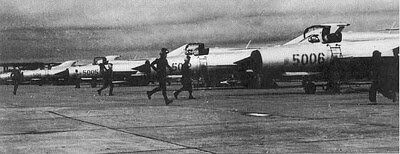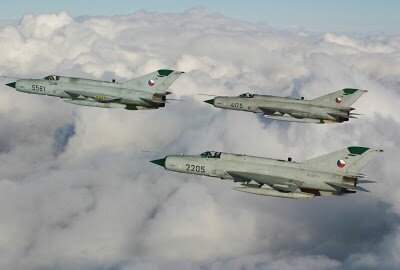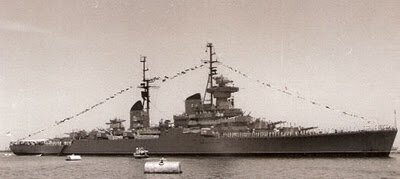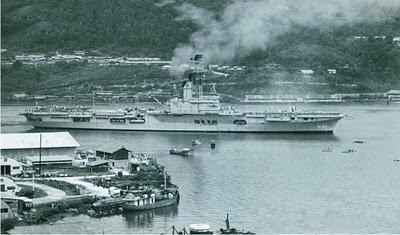Do you know that Indonesia’s military strength is one of the main, the largest, and strongest in the world at 1960s? At that time, even the Dutch forces were not comparable to Indonesia, and the United States was very concerned with the development of our military forces that was heavily supported by the latest technology of the Soviet Union.
In 1960, the Dutch were still entrenched in Papua. Seeing the power of the Republic of Indonesia became more powerful, Western-backed Dutch deceptionally designed to establish a puppet state that seemed to be independent, but still under the Dutch control.
President Sukarno immediately took extreme action, in purpose of Papua recapture. Sukarno immediately issued a decree “Trikora” in Yogyakarta, and the contents were:
1. To prevent the formation of a puppet state of Papua, made by the Dutch colonial.
2. To raise the Sang Saka Merah Putih (The Red-and-White Indonesian flag) in the Papua (West Irian at that time).
3. To be prepared for a general mobilization, maintaining independence and unity of the nation’s homeland.
Thanks to the proximity of Indonesia with the Soviets, Indonesia then got a help with massive naval forces and advanced air military in the world with a huge value of U.S. $ 2.5 billion. That time, the Indonesian military forces were considered the strongest in the southern hemisphere.
The main strength of the Trikora Indonesia forces is one of the largest warships in the world’s fastest man-made Soviet Sverdlov class, with a giant cannon 12 caliber 6 inches. This is the KRI Irian, a giant weighing 16,640 tons with a crew of 1270 people, including 60 officers. The Soviets never once gave this strong ship to any other nations except Indonesia. (New ships now from Indonesia Sigma class weighs only 1600 tons).
KRI Irian was the most dangerous one of the main ship in the world and its strength was proportional to the ships America’s best fighter, the USS Iowa, USS Wisconsin and USS Missouri. The defender anti-air attack was very strong, because the kind had a triple 4-bis Mk5 gun turrets 20 mm caliber, and 32 multi-function Canon 3.7 cm caliber. Its armored belt had reached 100 mm thick, almost impossible to penetrate the warships with the Dutch’s best, including Hr. Ms. Evertsen.
HNLMS Karel Doorman in Biak, Papua
Since the arrival of this ship immediately the Dutch drastically reduced its presence in Papua. The carrier of the Dutch largest pride, HNLMS Karel Doorman was ordered to leave immediately as soon as HMS Papua New Guinea moved to leave the Admiralty Yard in Leningrad to Surabaya, Indonesia.
Indonesia Air Force also became one of the main fleets of air deadliest in the world, which consisted of more than 100 aircraft-art at that time:
10 aircraft supersonic MiG-19.

- 20 fighter supersonic MiG-21 Fishbed.
- 30 aircraft MiG-15.
- 49 fighter high-subsonic MiG-17.
The aircraft MiG-21 Fishbed is one of the main planes of the world’s most advanced supersonic thathas been able to fly at the speed reaching Mach 2. This aircraft was even better than the most sophisticated American aircraft at that time, the supersonic F-104 Star-fighter and F-5 Tiger. All while the Dutch were still relying on the planes from World War II such as P-51 Mustang.
For the record, the magnitude of the aircraft MiG-21 and MiG-17 was thatin the Vietnam War they encouraged Americans to establish the United States Navy Strike Fighter Tactics Instructor, the training center for best pilots known as TOP GUN.
Indonesia also had a fleet of 26 long-range strategic bomber Tu-16 Tupolev (Badger A and B). This made by Indonesia one of only 4 nations in the world that have strategic bombers, namely the United States, Russia, and England. The home is located at the Air Force Base Iswahyudi, Surabaya.
Even China and Australia did not have strategic bombers like this. The bombers also featured a variety of sophisticated electronic equipment and special anti-missile warships Kennel AS-1, which could easily sink the ships of Western combat.
Indonesia also possessed a 12 Whiskey-class submarines, dozens of Corvette-class battleships, 9 of the world’s largest helicopter MI-6, MI-41 helicopter 4, various aircraft carriers including heavy transport aircraft Antonov An-12B. In total, Indonesia possessed 104 units of combat ships. Not to mention the thousands of the best assault rifles at the time and still become legendary to this day, the AK-47.
This all made Indonesia air force become one of the sea and air military strongest in the world. It was so thrillingly great that America under the leadership of John F. Kennedy forced the Dutch to get out of Papua, and stated in the UN forum that the transition of power in Papua from the Netherlands to Indonesia was something that can be accepted.
 Many people thought that there will be no schools and teachers in the future. Is that true? Now, Internet and the other technology are very helpful to improve us for study. And as we know, there are many students who are very lazy to go to school. Schools and teachers can disappear in the future, but I do not believe it will really happen.
Many people thought that there will be no schools and teachers in the future. Is that true? Now, Internet and the other technology are very helpful to improve us for study. And as we know, there are many students who are very lazy to go to school. Schools and teachers can disappear in the future, but I do not believe it will really happen.











